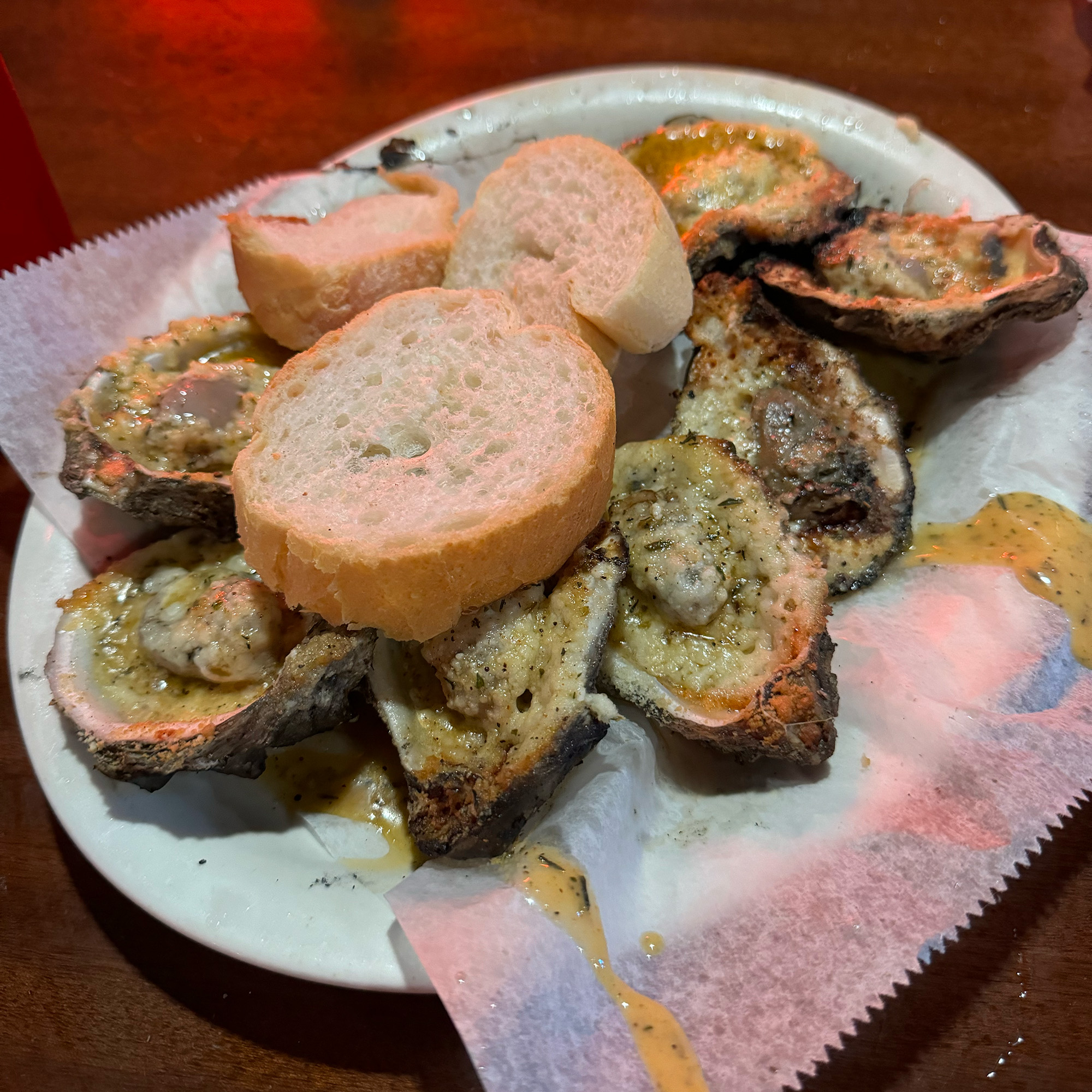Frisco Foodies is a recurring column in which a San Francisco local shares food memories of growing up in a now rapidly changing city.
I
n college on the weekends, a couple of friends and I used to grab a big bag of oysters from Pacific Supermarket, and a box of Coronas and Smirnoff Ice, and then we’d barbecue those bad boys up on the grill with a soy-sauce-lemon-hot-sauce mixture to drizzle over top. We weren’t picky about what kind of oysters they were or how ethically they were raised, or whether the name of the month had an “r” in it to indicate the safest season to eat them. We just loved the ritual of taking our time eating and catching up.
We called ourselves the Oyster Crew, and for every perfect five we shucked, there was always one oyster that was a little too large to swallow in one bite or too full of crunchy sand in its belly. Those we half-swallowed and forced down before they’d almost re-emerge in a beer burp. But a quick fist-pound to the chest, eyes watering, and we were back in the game, ready for the next round of oysters steaming hot off the grill.
Since then, I’ve had my fair share of oysters: raw Kumamotos by the dozen in Sausalito and baked Rockefellers in New York’s Grand Central Station. I’ve eaten them fried up in cornmeal and overstuffed into a po’ boy in Oakland and, my personal favorite, char-grilled in Creole spices and butter with a golden Parmesan crust in New Orleans. I just can’t get enough of these bivalves, their briny liquor coating my taste buds as they slip whole, uninterrupted down my throat. While opining on the oyster’s characteristics could get downright, ermm, sexual, its aphrodisiac qualities are probably why it turned from a poor man’s food to a sophisticated symbol of luxury. I even remember a Punky Brewster episode where an oyster accidentally slipped down Punky’s dress during a fancy dinner party while she pretended to relish this rich-person delicacy.

After college, I whet my expensive appetite for oysters on various $1 oyster days around the Bay Area: in Berkeley at Skates on the Bay, at Woodhouse Fish Company on Tuesdays, and sitting on a dock in Oakland on a gorgeous day at Lake Chalet. These feasts taught me that I could certainly pound a dozen solo or “to the face,” and also that I would have to make more money to support this habit — especially now that rising costs have made these deals a distant memory.




